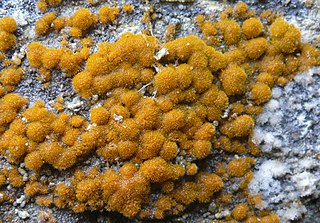| Propionispora | |
|---|---|
| Scientific classification | |
| Kingdom: | |
| Phylum: | |
| Class: | Negativicutes Marchandin et al. 2010 |
| Order: | Selenomonadales Marchandin et al. 2010 |
| Family: | Veillonellaceae Rogosa 1971 emend. Marchandin et al. 2010 |
| Genus: | PropionisporaSchink et al. 1983 |
| Species | |
| |
Propionispora is a genus of Firmicutes bacteria classified within the class Negativicutes. [1] [2]

The Firmicutes are a phylum of bacteria, most of which have gram-positive cell wall structure. A few, however, such as Megasphaera, Pectinatus, Selenomonas and Zymophilus, have a porous pseudo-outer membrane that causes them to stain gram-negative. Scientists once classified the Firmicutes to include all gram-positive bacteria, but have recently defined them to be of a core group of related forms called the low-G+C group, in contrast to the Actinobacteria. They have round cells, called cocci, or rod-like forms (bacillus).

Bacteria are a type of biological cell. They constitute a large domain of prokaryotic microorganisms. Typically a few micrometres in length, bacteria have a number of shapes, ranging from spheres to rods and spirals. Bacteria were among the first life forms to appear on Earth, and are present in most of its habitats. Bacteria inhabit soil, water, acidic hot springs, radioactive waste, and the deep portions of Earth's crust. Bacteria also live in symbiotic and parasitic relationships with plants and animals. Most bacteria have not been characterised, and only about 27 percent of the bacterial phyla have species that can be grown in the laboratory . The study of bacteria is known as bacteriology, a branch of microbiology.
The Negativicutes are a class of bacteria in the phylum Firmicutes, whose members have a peculiar cell wall with a lipopolysaccharide outer membrane which stains gram-negative, unlike most other members of the Firmicutes. Although several neighbouring Clostridia species also stain gram-negative, the proteins responsible for the unusual diderm structure of the Negativicutes may have actually been laterally acquired from Proteobacteria. Additional research is required to confirm the origin of the diderm cell envelope in the Negativicutes.


